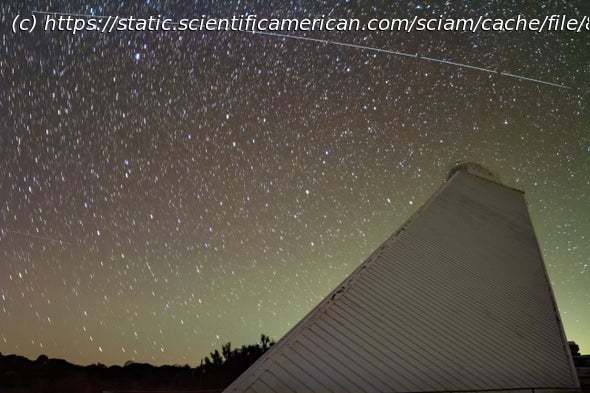Scientific American is the essential guide to the most awe-inspiring advances in science and technology, explaining how they change our understanding of the world and shape our lives.At times, the enormous BlueWalker 3 telecommunications satellite is brighter than some of the most iconic stars visible from Earth
On some nights, one of the brightest objects in the sky is neither a planet nor a star. It is a telecommunications satellite called BlueWalker 3, and at times it outshines 99% of the stars visible from a dark location on Earth, according to observations reported today in Nature.
BlueWalker 3 is the most brilliant recent addition to a sky that is already swarming with satellites. The spaceflight company SpaceX alone has launched more than 5,000 satellites into orbit, and companies around the globe have collectively proposed launching more than half a million satellites in the coming years — a scenario that astronomers fear could hamper scientific observations of the Universe.
The study “shows us that there are no boundaries to satellite brightness,” says Patrick Seitzer, an emeritus astronomer at the University of Michigan, Ann Arbor, who was not involved in the study. “I’m concerned that we’re going to see a very large number of large satellites launched in the next decade, and it will change the appearance of the night sky forever.”Twilight star
Telecommunications firm AST SpaceMobile in Midland, Texas, launched BlueWalker 3 on 10 September 2022 as a prototype for a satellite fleet designed to make mobile broadband available almost anywhere. The satellite’s huge array of antennas and white colour mean that it reflects a considerable amount of sunlight back towards Earth, making it shine even at twilight.
To quantify its effects, professional and amateur astronomers embarked on an international observation campaign, ultimately spotting the satellite from locations in Chile, the United States, Mexico, New Zealand, the Netherlands and Morocco.






